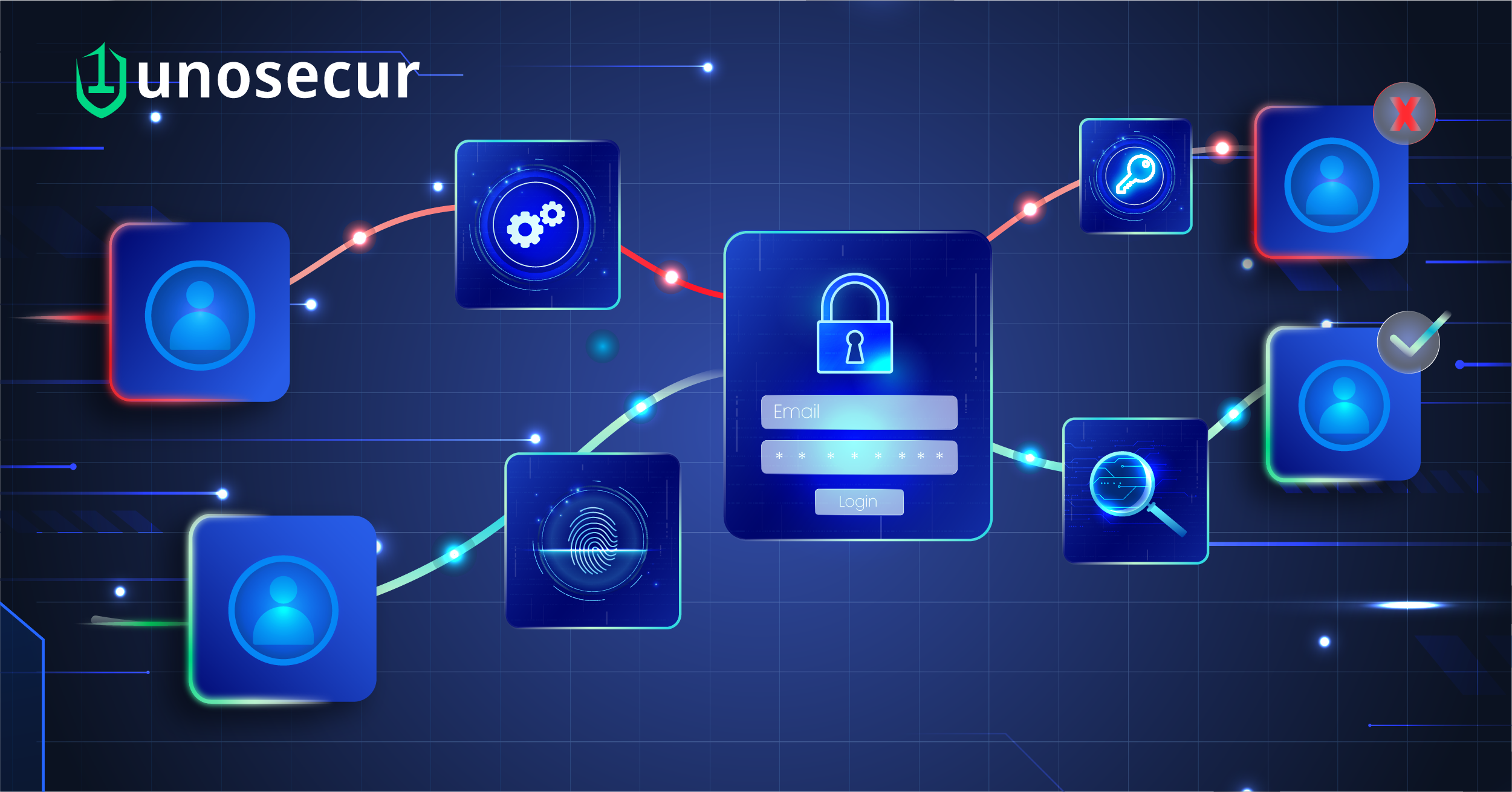Adaptive vs Static MFA: How to step up access in Zero Trust identity security

Zero Trust identity security is built on the idea that no user, device, or session should be trusted by default.
Traditional security models assumed that once you were “inside” the network, you were safe. But in today’s environment of remote work, cloud apps, and constant cyber threats, that assumption no longer holds.
Authentication must be continuous, adaptive, and based on context. That’s where the difference between static MFA and adaptive MFA (risk-based MFA) becomes critical.
TL;DR
- Static MFA applies the same multi-factor authentication process every time, regardless of risk.
- Adaptive MFA adjusts security checks based on real-time context, such as device, location, or session behavior.
- Organizations should “step up” access only when risk signals are high, not during routine logins.
- Adaptive MFA supports Zero Trust Identity Security by balancing stronger protection, regulatory compliance, and better user experience.
What is static MFA and how does it work?
Static MFA, sometimes called “traditional MFA,” requires users to present two or more factors every time they log in. These factors typically include:
- Something you know (like a password).
- Something you have (like a one-time passcode or authenticator app).
- Something you are (like a fingerprint or facial recognition).
The key point with static MFA is consistency. Every login follows the same path, whether the user is working on a trusted office device during business hours or logging in from an unknown laptop on a suspicious IP at midnight.
This uniformity makes static MFA easy to deploy and predictable for administrators. But it also comes with drawbacks. Employees often experience MFA fatigue from constant prompts, which can slow productivity.
Worse, security teams sometimes exempt high-profile users (such as executives or admins) from MFA to reduce friction, creating risky blind spots. Static MFA is strong compared to password-only logins but limited in its ability to adapt to real-world risk.
What is adaptive MFA (risk-based MFA) in Zero Trust?
Adaptive MFA, also called risk-based MFA, takes authentication to the next level. Instead of applying the same process across the board, it evaluates risk signals in real time to determine the level of authentication required.
These signals can include:
- Device health and whether it’s managed by the organization.
- Geographic location and whether it matches typical patterns.
- IP reputation and whether the network is trusted or suspicious.
- User behavior, such as unusual login times or activity.
- Sensitivity of the application or data being accessed.
If everything looks normal, adaptive MFA might only require a password and device trust check. But if risk indicators spike, such as a login from a new country or a request for privileged access, it will “step up” by requiring additional authentication like a push notification, biometric scan, or hardware token.
Adaptive MFA aligns seamlessly with Zero Trust Identity Security, which demands continuous verification and context-aware decisions. By combining strong security with reduced friction, it creates a smarter balance between protection and usability.
How does adaptive MFA differ from static MFA?
The difference between static and adaptive MFA is rigidity versus intelligence.
Consistency vs. context: Static MFA enforces the same rules for all sessions, while adaptive MFA adjusts based on risk conditions.
User experience: Static MFA often frustrates users with repetitive steps; adaptive MFA improves usability by only prompting extra checks when something is unusual.
Security posture: Static MFA can’t respond dynamically to new threats, whereas adaptive MFA continuously adapts to conditions in real time.
In essence, static MFA treats every login as equally risky. Adaptive MFA recognizes that risk varies and adjusts accordingly. That makes adaptive MFA a more effective component of a Zero Trust Identity Security strategy.
When should organizations step up access with MFA?
The value of adaptive MFA lies in its ability to know when to apply stronger checks. Some common step-up scenarios include:
New or unmanaged devices: When a login comes from a device that is not enrolled or secured.
Unusual locations or times: For example, a login from a different country or outside normal working hours.
Suspicious networks: Access attempts from high-risk IP addresses or anonymous proxies.
Privileged or sensitive applications: When a user tries to access financial data, HR systems, or administrator consoles.
Behavioral anomalies: Uncharacteristic activity such as bulk downloads or access to resources the user normally doesn’t touch.
By stepping up authentication only when warranted, organizations reduce unnecessary friction while maintaining high security standards. This is a core principle of Zero Trust Identity Security, where verification is continuous and tailored to risk rather than static rules.
What are the compliance and business benefits of adaptive MFA?
Apart from improving security, adaptive MFA delivers measurable compliance and business advantages:
Regulatory alignment: Standards such as NIST 800-63, PCI DSS, HIPAA, and GDPR encourage adaptive authentication controls. Demonstrating adaptive MFA helps organizations prove compliance during audits.
Reduced credential theft: Because attackers don’t know when step-up authentication will trigger, phishing and credential-stuffing attacks are harder to execute.
Lower MFA fatigue: Employees face fewer prompts for low-risk logins, improving productivity and reducing resistance to MFA adoption.
Customer trust and retention: Businesses offering digital services can provide seamless logins while still protecting accounts, striking a critical balance for customer experience.
Support for Zero Trust initiatives: Adaptive MFA works with Zero Trust Identity Security systems by constantly and flexibly checking identities based on the situation.
For enterprises balancing compliance demands, user satisfaction, and advanced threats, adaptive MFA offers the best of all worlds.
Don’t let hidden identities cost
you millions
Discover and lock down human & NHI risks at scale—powered by AI, zero breaches.



